Traditional Poster
Pulse Sequences / Quantitative Imaging / Artifacts & Correction
ISMRM & ISMRT Annual Meeting & Exhibition • 10-15 May 2025 • Honolulu, Hawai'i

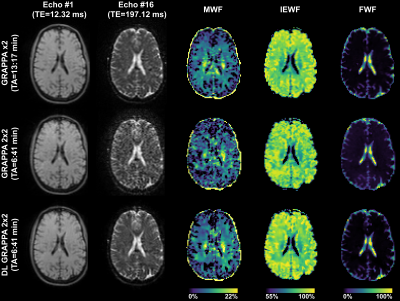 |
5200. On
the feasibility of myelin water imaging at low-field MRI using
multi-echo GRASE
G. F. Piredda, T. Yu, E. J. Canales-Rodríguez, L. Bacha, T.
Di Noto, B. Maréchal, D. Nickel, T. Kober, T. Hilbert
Siemens Healthineers International AG, Lausanne, Switzerland
Impact: By leveraging deep learning-based
reconstructions, myelin water imaging is feasible at 0.55T
with a multi-component decomposition of multi-echo T2 data
acquired in approximately 6 minutes at 2.5 mm isotropic
resolution, encouraging further neuroimaging research at low
field strengths.
|
|
 |
5201. Quantification
of cortical and subcortical integrity within clinically feasible
scan time using a 16-Tx/64-Rx RF array
K. Pine, P-L Bazin, E. Kirilina, N. Weiskopf
Max Planck Institute for Human Cognitive and Brain Sciences, Leipzig, Germany
Impact: This is an important step toward the clinical
translation of ultra-high-resolution qMRI. The high
sensitivity achieved in cortical and brainstem imaging makes
the tested RF array a valuable tool for detecting early
neurodegeneration at prodromal stages of AD and PD.
|
|
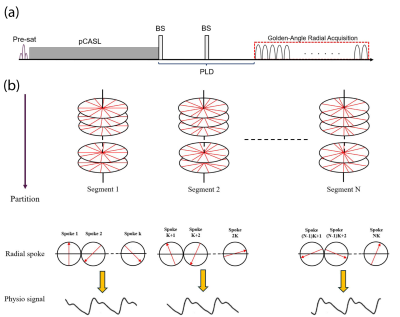 |
5202. Detecting
cerebral microvascular pulsation using cardiac-synchronized
pCASL with segmented stack-of-star golden-angle radial bSSFP
readout
T. Zhao, L. Yan
Northwestern University, Chicago, United States
Impact: We developed an efficient non-invasive MRI
technique for imaging cerebral microvascular pulsatility,
which could provide a useful imaging tool to directly study
microvascular dynamics and their role in the glymphatic
system.
|
|
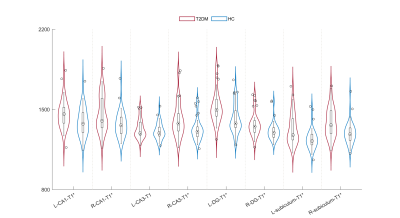 |
5203. Quantitative
synthetic MRI and 3D T1 imaging reveal structural and functional
changes in hippocampal subfields in Type 2 Diabetes
H. Zhou, M. Li, W. Liu
Central People's Hospital of Zhanjiang, Zhanjiang, China
Impact: This study demonstrates synthetic MRI’s utility
in monitoring hippocampal subfields changes and cognitive
decline in T2DM, providing insights into metabolic and
neurovascular disruptions relevant to Alzheimer’s disease
risk.
|
|
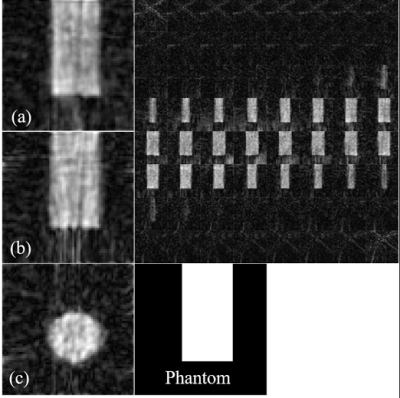 |
5204. "Random"
non-linear encoded MRI on standard clinical MRI systems
F. Bschorr, T. Hüfken, T. Lobmeyer, H. Frantz, J. Schüle, T.
Speidel, V. Rasche
Ulm University Medical Center, Ulm, Germany
Impact: This work demonstrates that the higher-order
shim coils of a clinical MRI system can be utilized for
first demonstrations of non-linear encoding schemes without
the need of additional, mostly expensive and/or
labour-intensive hardware.
|
|
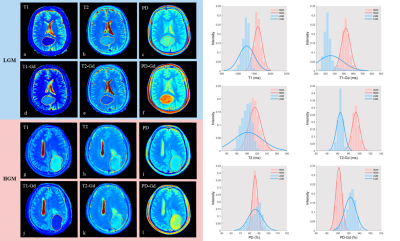 |
5205. Delta
Histogram Analysis of Synthetic MRI for Evaluating the Grade and
Cellular Proliferation of Meningioma
Y. Li, Y. Chen, D. Lin, X. Zhou, Y. Zhao, J. Zhang, Y. Xue,
L. Lin
School of Medical Imaging,Fujian Medical University, FuZhou, China
Impact: Delta histogram analysis of SyMRI can predict
the grade and proliferative activity of meningiomas, which
may facilitate the personalized treatment and prognostic
assessment.
|
|
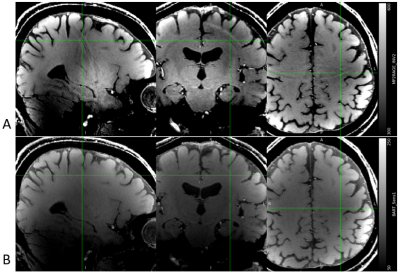 |
5206. Residual
Acceleration Ghost Artifacts in MP2RAGE at 7T MRI and Their
Correction with BART Reconstruction
K-J Jung, J. Tamir
University of Illinois Urbana-Champaign, Urbana, United States
Impact: MP2RAGE is the most popular sequence for
T1-weighted imaging at 7T. The ghosting artifacts on the
INV2 contrast were attributed to the parallel acceleration.
Our solution may contribute to a revised reconstruction of
the MP2RAGE sequence.
|
|
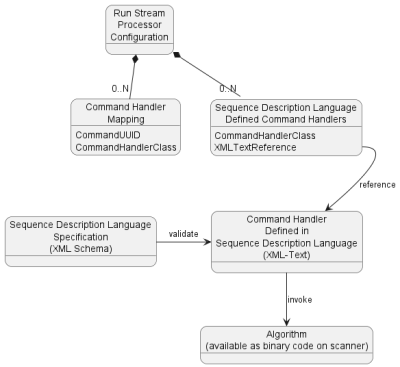 |
5207. Sequence
Description Language: Enabling Real-Time Applications in the
Remote Sequence Interface for Open Innovation
T. Kluge, C. Forman
Siemens Healthineers AG, Erlangen, Germany
Impact: MR sequences can be developed and immediately
tested on the MR scanner, become software version
independent and easily can be shared. MR systems can run new
MR sequences without modification, which increases software
security and safety in clinical environments.
|
|
 |
5208. Log
Subtracted Inversion Recovery
M. Bydder, D. Cornfeld, P. Condron, T. Melzer, E. Kwon, M.
Tayebi, G. Newburn, M. Scadeng, S. Holdsworth, G. Bydder
Mātai Medical Research Institute, Gisborne, New Zealand
Impact: Use of the technique may allow clinicians to
better visualize complex interfaces between tissues and to
identify features in poorly characterized signal and partial
volume mixtures.
|
|
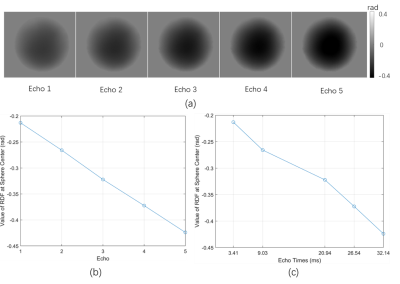 |
5209. The
Gradient Switching-induced Current Field in Multi-echo Gradient
Recalled Echo Sequences
H. Zhong, Y. Song, J. Li
East China Normal University, Shanghai, China
Impact: These findings demonstrate the impact of eddy
currents generated in multi-echo GRE by gradient switching
on phase images, necessitating further investigation into
their effects in vivo.
|
|
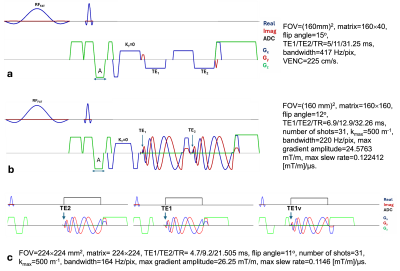 |
5210. Increased
temporal resolution of dynamic oximetry with spiral acquisition
scheme
M. Hosseini, M. Langham, F. Wehrli
University of Pennsylvania, Philadelphia, United States
Impact:
Because of high efficiency in k-space coverage, spiral sampling is well suited for high temporal resolution dynamic oximetry. Spiral readout showed reduced motion and pulsatile flow artifacts, and the absence of phase wrapping often observed in BRISK field maps. |
|
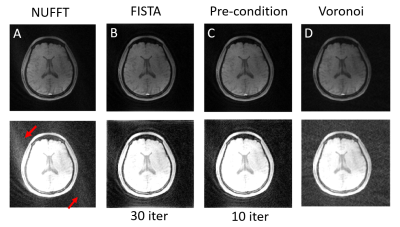 |
5211. Removing
Artifact of 3D Spiral In-Out with Accelerated Iterative
Reconstruction using k-space Preconditioning
z. zhong, Q. Liu, J. Xu
United Imaging Healthcare North America, Houston, United States
Impact: This advancement is expected to benefit various
applications relying on the spiral in/out trajectory, such
as real time imaging and functional MRI.
|
|
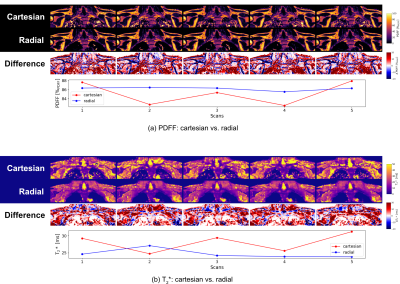 |
5212. Motion-robust
proton density fat fraction and T2* mapping in supraclavicular
adipose tissue using radial stack-of-stars imaging
J. Raspe, J. Stelter, P. Braun, M. Wu, D. Karampinos
Technical University of Munich, Munich, Germany
Impact: Our analysis provides evidence that choosing a
radial stack-of-stars acquisition over cartesian sampling
improves precision of proton density fat fraction (PDFF) and
T2* mapping. This potentially improves investigation of
dynamic changes in brown adipose in an activation paradigm.
|
|
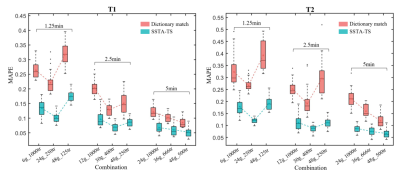 |
5213. High-Speed
Tissue Quantification Using Spatiotemporal Attention Mechanism
with Undersampling Strategy Consideration
J. Wei, P. Wongkornchaovalit, X. Cao, Z. Zhou, Q. Ding, H.
Ye, J. Zhong, H. He
College of Biomedical Engineering and Instrument Science, Zhejiang University, Hangzhou, China
Impact: The proposed STA-TS network significantly
improves MRF accuracy and efficiency, achieving full brain
coverage at 1 mm resolution in just 2.5 minutes, providing a
faster and more accurate imaging solution for clinical
applications.
|
|
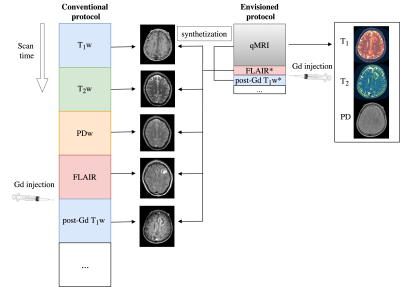 |
5214. More
accurate synthetic MRI to shorten clinical protocols
F. Xu, E. Versteeg, O. van der Heide, K. M. Nam, S. Mandija,
M. Schilder, P. Robe, T. Snijders, C. A. van den Berg, A.
Sbrizzi
UMC Utrecht, Utrecht, Netherlands
Impact: This improved synthesis approach, using an
ultra-highly undersampled hybrid CS protocol, achieves more
accurate contrast synthetization and enhances the potential
of synthetic MRI for shorter clinical scan times.
|
|
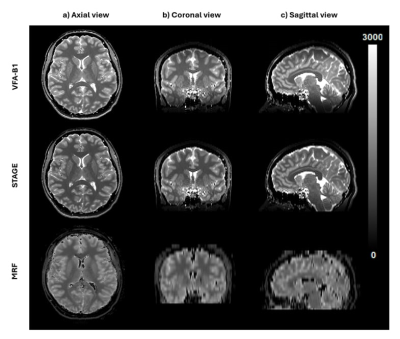 |
5215. Test-retest
reliability and inter-method reproducibility of cerebral T1
mapping at 3T
S. Wright, V. Truong, H. Sawan, J. Zhong, Y. Chen
Wayne State University School of Medicine, Detroit, United States
Impact:
This study demonstrated an excellent test-retest agreement of the two 3D T1 mapping methods on the newly implemented 3T MRI, which lays a cornerstone for future clinical studies in Parkinson's disease and multiple sclerosis using this scanner. |
|
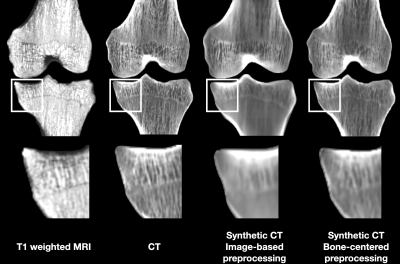 |
5216. Improving
synthetic CT generation with enhanced registration
P. Margain, S. Sommer, V. Ravano, A. Elwakil, T. Hilbert, C.
Mourad, J. Favre, P. Omoumi
Swiss BioMotion Lab, Lausanne University Hospital and University of Lausanne, Lausanne, Switzerland
Impact: Bone-centered registration enhances synthetic CT
generation for bone imaging, potentially advancing
musculoskeletal imaging applications focused on bone
pathology.
|
|
 |
5217. Density
optimized low-discrepancy k-space trajectories for accelerated
in-vivo 2D single-point imaging and chemical-shift imaging
P. Gebhard, T. Speidel, F. Bschorr, J. Schüle, V. Rasche
Ulm University Medical Center, Ulm, Germany
Impact:
Optimized single-point imaging sampling trajectories, leveraging quasi-random Sobol sequences and center oversampling, achieved faster acquisition and less coherent artifacts, enhancing in-vivo MRI and chemical shift imaging efficiency. This method shows strong potential for advancing 13-C imaging with hyperpolarized signals. |
|
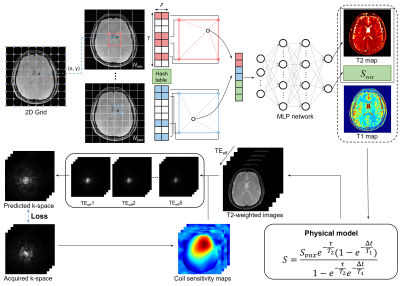 |
5218. Whole-Brain
T2 Mapping with Accelerated Stack-of-Stars Acquisition Using
Unsupervised Model-Based Implicit Neural Representation Networks
T. Xiao, B. Liu, H. She, Y. Du
Shanghai Jiao Tong University, Shanghai, China
Impact: A T2 quantitative sequence that accelerates
scanning using radial trajectory is presented. An
unsupervised deep-learning algorithm employing
multi-resolution hash-encoding implicit neural
representation is introduced to reconstruct T2 maps from
undersampled data. This approach has potential to
significantly shorten acquisition time.
|
|
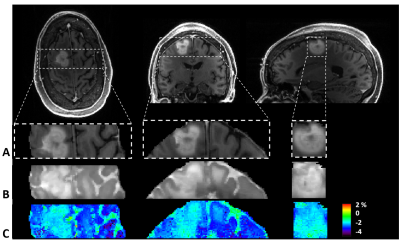 |
5219. Highly
Accelerated Inner-volume selective 3D GRASE CEST Imaging with
Temporal Random Walk Sampling – Application to a Brain Tumor
Patient at 3 T
H. Kim, S. Park, J. Kim, J. Chung, R. Hu, D. Feinberg, P.
Sun
Emory University, Atlanta, United States
Impact: This technique offers a promising tool for
efficient, high-resolution CEST imaging, with potential
applications in clinical neuro-oncology for precise tumor
assessment.
|
The International Society for Magnetic Resonance in Medicine is accredited by the Accreditation Council for Continuing Medical Education to provide continuing medical education for physicians.